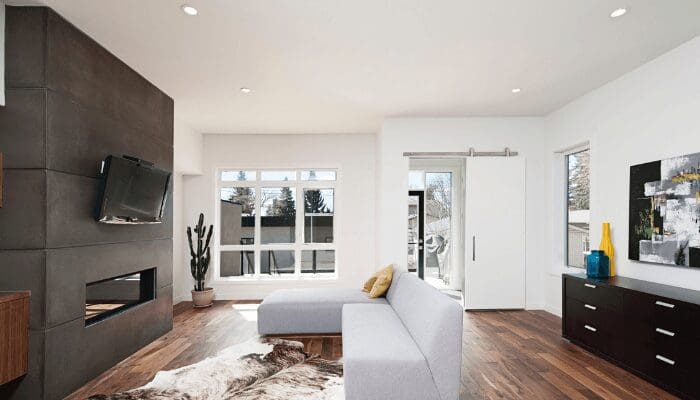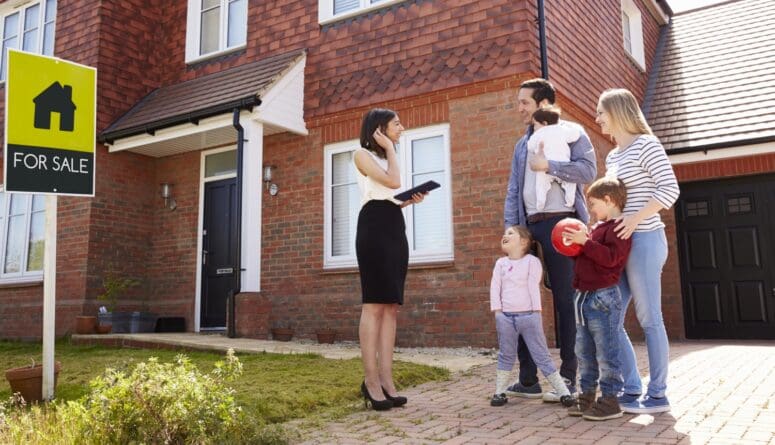6 Clear Signs that Your Home Listing Price Is Off the Mark (And What to Do About It)
- Published on
- 4 min read
-
 Valerie Kalfrin Contributing AuthorClose
Valerie Kalfrin Contributing AuthorClose Valerie Kalfrin Contributing Author
Valerie Kalfrin Contributing AuthorValerie Kalfrin is a multiple award-winning journalist, film and fiction fan, and creative storyteller with a knack for detailed, engaging stories.
Pricing your house for sale is no easy task—and when you want to shoot for the stars for a home you’ve loved, it’s tough to admit that your asking price might be turning buyers away. Shouldn’t you ask for a bit more, to leave breathing room for negotiation? What about being competitive with other homes in your area?
Total existing-home sales nationwide decreased 6.4% from November to December 2018, and dropped 10.3% when compared with December 2017, according to the National Association of Realtors (NAR). In times when there are fewer sales and analysts point to an overall real estate chill, it’s doubly important to entice buyers both with a home’s remarkable features and a price they’ll reasonably pay.
Knowing what’s on the line, don’t dilly dally over how to tell whether your home listing price is off the mark. Let’s get straight to the point and then dive into some actionable tips to adjust the price with your agent’s help. When in doubt, envision your end game: a “Sold” sign in the yard displayed with pride.

Sign #1: Showing traffic is below two to four visitors per week
If it’s been more than two months since your home went on the market and no one’s dropping by, that’s one sign that your home listing price might be off, said top-selling real estate agent Todd Schroth, who has 19 years of experience in the real estate business and serves the Orlando, Florida area.
“You should be getting anywhere from two to four showings a week,” he said. Although that does slow down after the first few weeks, having no showings and no offers is one indicator that your home is overpriced.
Sign #2: You have lots of traffic but no offers
Depending on when potential buyers see your listing, showings can wax and wane. “I’ve had a house on the market for two weeks, a bunch of showings, nothing for a week, and then all of a sudden on a Friday, I’ve got four people who want to see the house on one day. It’s just timing,” Schroth said. But if all those visitors don’t result in any interest, that’s another clue that your price is in the wrong ballpark.

Sign #3: You’ve received offers but you keep getting lowballed
Real estate values are highly local and can vary even from neighborhood to neighborhood based on factors like proximity to shops and restaurants or location on a quiet or busy street. From a bird’s-eye view, a median existing-home price for all housing types in December 2018 was $253,600, up 2.9% from a year ago, NAR statistics show. (“Existing homes” include single-family homes, townhomes, condominiums, and co-ops.)
It’s common to leave some negotiating room by asking for slightly more than you expect, but this is typically 5% to 10% above the value determined by looking at comparable properties and usually only works in a seller’s market.
Naturally, prices in your area will vary, but if you’re getting offers that are all way below what you’re asking, you’re overpriced, Schroth said.
Sign #4: Your days on market keep creeping up
Pricing your home too high can result in a lower selling price over time because your house has been on the market longer.
The NAR notes that 39% of the homes sold in December 2018 were on the market for less than a month. Properties typically stayed on the market for 46 days in December 2018, up from 40 days a year earlier, the NAR said.
Let’s say your agent suggested listing your home at $350,000, but you wanted to start at $375,000. After three months with no offers, you’ve agreed to reduce to $350,000, but you’ll be lucky to get that much. “When you sit on the market longer, you’re going to end up with a lower asking price,” Schroth said. “Buyers are going to want to pay a lower price because [the property] is considered stagnant.”
Sign #5: You went with the agent who priced your home the highest
It’s smart to compare the pricing strategies among several real estate agents and see what type of range your house falls in. Experienced agents will be able put together a comparative market analysis for you that takes into account the price point of recently sold properties in your area that are similar to yours in square footage, number of beds and baths, and condition—and then add or subtract based on nuanced factors like upgrades or positioning on a hill.
An agent who prices your home the highest might be “trying to buy the listing,” so that your home will ultimately sell for less because it spends a longer time on the market, Schroth said. “They’re going to work you down through the process” instead of pricing your home accurately.
“When you sit on the market longer, you’re going to end up with a lower asking price,” he said.

Sign #6: Neighboring homes are priced differently and in visibly better condition
Although it’s tempting to look at what other homes in your area have sold for, understand that you’re likely not comparing apples to apples with a layman’s eye.
“That’s just a very common thing that happens: ‘My neighbor sold for just over $400,000, so I should get $425,000 because the market is going up,’” Schroth said.
“We have to sit down and show them why their neighbor sold for more. Maybe they had a new roof; your roof is 15 years old. Or they had a new air conditioning system; yours is 10 years old. They repainted inside and out. Things like that.”
You also can’t base a comparison dollar for dollar on square footage, because one home may have a better location within the community, or the floor plans may vary, he added. “Does it have a third bathroom? Is the kitchen open? Not open?”
What to do next if you realize you overshot the list price
If you’re ready to reset your asking price, there are several ways for you and your real estate agent to proceed.
Option 1: Turn a price reduction into a marketing opportunity.
For starters, many agents call a reduction a “price improvement,” which sounds more positive.
Schroth said each time he changes something on his regional multiple listing service, or MLS, the property appears fresh on the MLS, Zillow, Realtor.com, and other portals.
He’ll also schedule a new open house with the price improvement as an enticement. “We can say, ‘Come check out this listing. … The sellers were motivated,” he said. “Otherwise, you’re just sitting in a house that’s had no changes.”
Option 2: Make sure your house isn’t cut off in the home search price filters.
Also check with your agent to make sure that your home’s price falls into the proper price bracket for online searches. Although lots of us like to shop “on the nines” when buying items for our homes (the idea of paying less at $34.99 than at $35), Schroth said home buyers tend to search in rounded numbers.
People tend not to type in, say, “$374,999 to $399,999” as their price range but “$375,000 to $400,000,” so it’s to set your home price accordingly.
Option 3: Give buyers their money’s worth.
Deferred maintenance can be an issue with setting an asking price, especially with homes built in the 1970s and 1980s. Schroth said he’ll suggest some general updates and repairs, but some sellers don’t heed that advice.
“Then the inspector comes in, does their inspection, and the buyer walks away because the seller wouldn’t fix something. It’s a $7,000 or $8,000 mistake,” he said. “We can reduce the price, or we can take care of the issue that’s going to come up on the next deal.”

Option 4: Undercut the price to try and drive a bidding war.
Your real estate agent also can undercut the price to drive a bidding war, similar to when you list a popular item on eBay at a lower price to draw in buyers, knowing that more eyes makes for competition.
For instance, if a community has three- and four-bedroom homes with two baths, but one has been updated and has a swimming pool, that’s the hot property. You want to price just below market so you can drive the price up.
Deciding whether to adjust your home listing price can be difficult—and emotional, too, depending on your financial situation and how many years you feel you’ve invested in your home. But taking the time for that tough decision now can save you from losing money with the wrong asking price.
Article Image Source: (Monkey Business Images/ Shutterstock)
